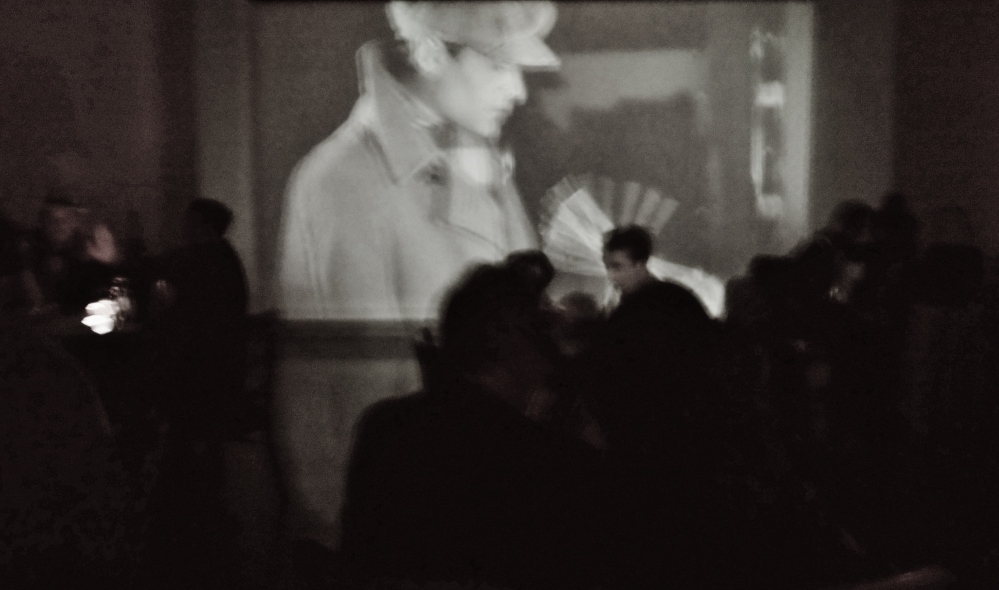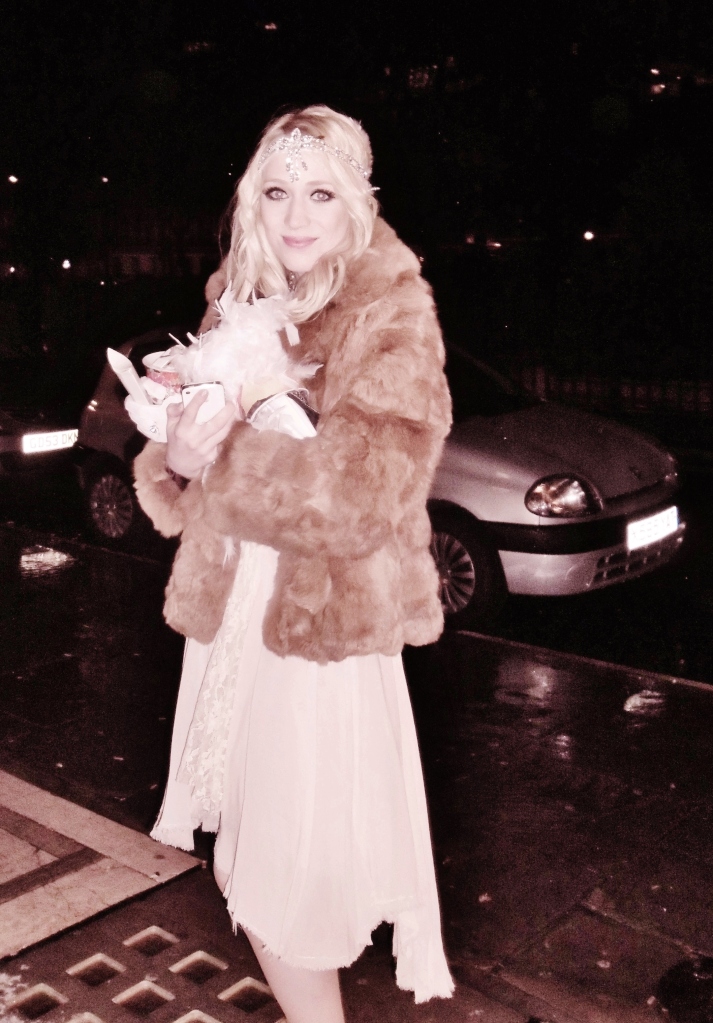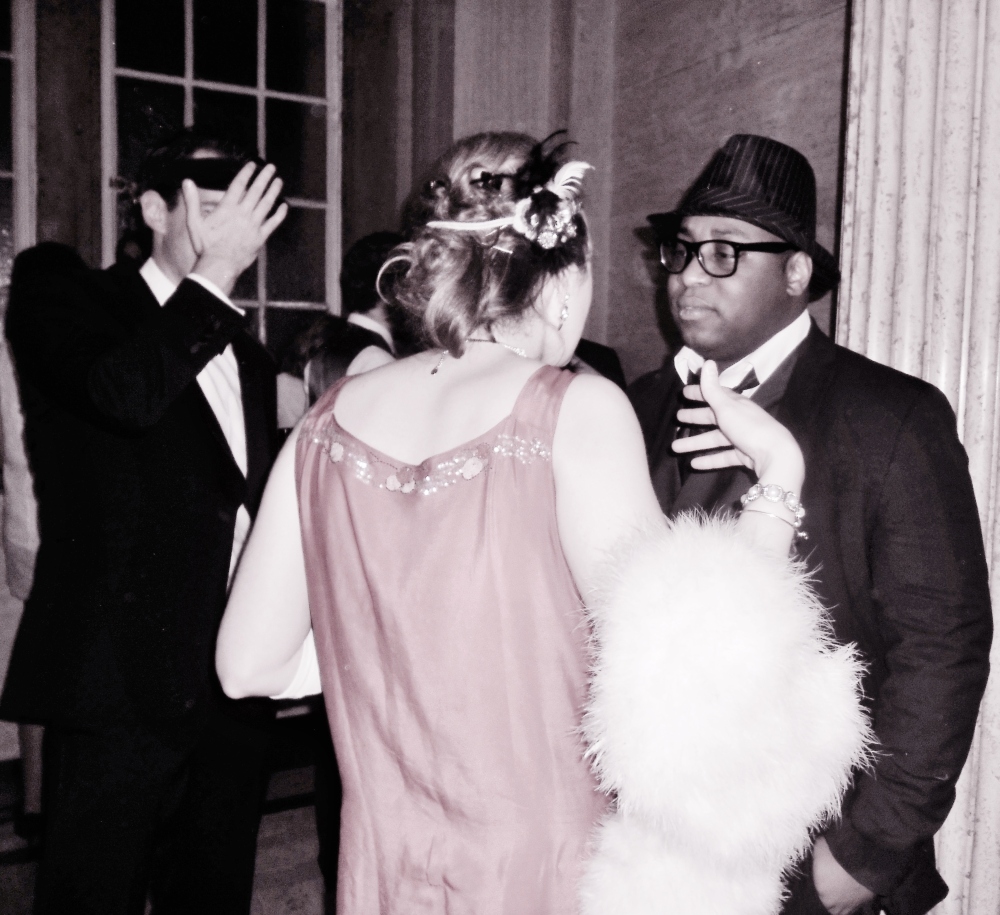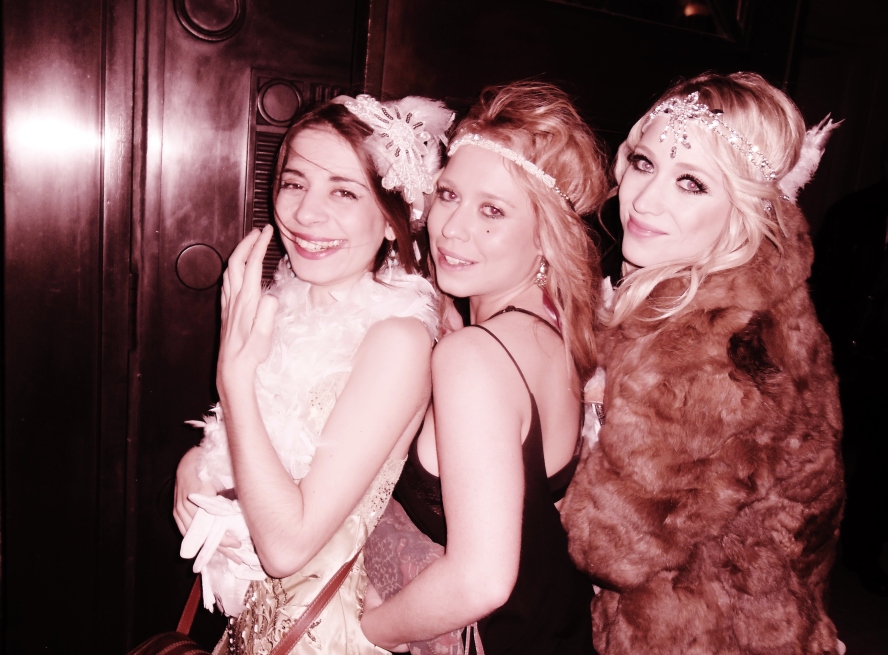The Power of Cinema: 1920’s New York Infiltrates the Modern World
From the cult violence of A Clockwork Orange to Hannibal Lecter‘s legacy of cannibalism, long has Hollywood been the much suspected culprit behind America’s criminal underbelly; yet as much as many may wish to deplore the extravagance of American cinematography, its power to enchant the modern multitude also makes it a global educative force. A kaleidoscopic explosion of shimmering diamonds, jewels and sequins, a bewitching array of suave billionaires and vintage motor cars –the Great Gatsby in film provides a rich and visually sumptuous feast that has left its audience entranced by the intoxicating decadence of 1920’s New York.

A cutting social commentary on the cavalier capitalistic decadence and debauchery of its time, Scott F. Fitzgerald’s novel is a hallmark of American Literature.
Spurred on by the film’s release this December, 1920’s glamour has been propelled onto the catwalk, invading both the world of haute-couture and high street fashion as sales of vintage clothing soar by as much as 225% in stores such as Debenhams while glistening copies of F. Scott Fitzgerald‘s novels have flown into handbags across Europe and America. Not only has the film re-opened the world’s eyes to classic American literature and post-war fashion, but from London, India to Brazil and Australia, the roar of 1920’s American high society has echoed into the 21st century with many choosing to walk into the new year with a step back in time as a plethora of 1920’s style new year’s eve parties swept across the oceans.
What better way to learn of history than to relive it?

Ostentatious Extravagance
“I’ve been drunk for about a week now, and I thought it might sober me up to sit in a library.” –Owl Eyes
Feather bowers and pearls necklaces dangle glamorously from the necks of women in crimson and royal blue velvet flapper dresses taking indulgent sips of champagne cocktails, young couples do the Charleston as the heavy rhythmic tones of the saxophone vibrate through their dancing feet whilst trilby hats shake to the beat of fast-moving ragtime riffs as the owners beneath them savour the exquisite taste of Russian roulette. A perhaps somewhat acute picture on the human condition, exposing an almost intrinsically human tendency towards sensual indulgence and self-gratification, these 21st century socialites appear to be perfect doubles of their 20th century counterparts.
Are we innately self-indulgent beings? Aside from technological advancements, is there simply nothing more to distinguish us from our 100 year old forerunners? Is society still the same divided cake of classism and racism that it once was?

The eighteenth amendment of the constitution made the purchase of alcoholic goods illegal and sparked off an abundance of anti-constitutional riots and demonstrations.
“Her voice is full of money.” -Jay Gatsby
106 years ago, America had waved goodbye to the suffering of World War I and was beginning to rebuild its delicate shell; the enlightening spark of electricity was to illuminate two thirds of households and after its initial depression,1920’s New York was to undergo a scintillating economic jump as the hire-purchase scheme was introduced, encouraging people to ‘buy now and pay later’, thus feeding commercial excess. The eighteenth amendment of the Constitution that banned liquor, allowed lower and middle-class characters such as Gatsby to ride high on the waves of organised crime and make their fortune on underground sales of alcohol and by 1929, 20% of Americans were the proud owners of a new motor car, prices having fallen dramatically with high production demands.
The Class System
“An Oxford man!” He was incredulous. “Like hell he is! He wears a pink suit.” -Jordan Baker
Aside from the unhindered excess of parties hosted by new-found millionaires, the Great Gatsby unveils some of the lesions in 1920’s society that had been brought on by post-war economic growth with Gatsby’s desperate attempts at social climbing encompassing the ill-fated chase for the all American Dream and the East Egg and West Egg embodying the class struggle between ‘old money’ and ‘new money’.
Women’s Status
“What’ll we do with ourselves this afternoon?” Cried Daisy “And the day after that, and the next thirty years?”
In post-war America, women began to make their way to the ballot box for the first time and Fitzgerald’s portrayal of emancipated women such as Myrtle dabbling in extramarital affairs reflect the bounty of a battle won by the suffragettes with the commencement of female sexual liberation and the start of changing attitudes towards women. Yet ‘I hope she’ll be a fool—that’s the best thing a girl can be in this world, a beautiful little fool’ wishes Daisy cynically for her daughter; women as housewives bound by domestic duty was still a commonplace phenomenon and the avarice of fiercely money-driven female characters in the novel such as Daisy reveal the perpetual economic dependence of women on their partners.
The Black Civil Rights Movement and the Harlem Renaissance
“The idea is, if we don’t look out, the white race will be–will be utterly submerged… “ –Nick Carrraway
The mass-migration of the long suffering African American population from the poor living conditions of the south to the economically flourishing northern cities had not proved dramatically beneficial in terms of finance for they found themselves still segregated onto the fringes of urban society. Often accused of crimes they had not committed and refused entry to white-only establishments, most had to dwell in urban ghettos, having swapped the overt southern racism of the Klu Klax Klan for the more covert racism of high society New Yorkers. The jazz singers at Gatsby’s social gatherings however, mark the beginning of the Harlem renaissance; the invention of radio and coverage from African American-run newspapers such as the New York Amsterdam News had brought gospel, blues and jazz to a mainstream audience, popularising singers such as Bessie Smith, Duke Ellington and Louis Armstrong. 1920’s New York was to experience a cultural wave of poetry, music and theatre as African-Americans finally found an outlet to express their extended suffering of social marginalisation.
1920-2014
“Can’t repeat the past?…Why of course you can!” –Jay Gatsby
Today, despite the elaborate veneer of 1920’s fashion that has begun to sweep night time stages with twinkling vibrancy, thanks to the suffragettes, changes in constitutional policy and the american civil rights movement, America has made unimaginable strides of improvement towards equality since Gatsby’s time. African Americans and all ethnic minorities enjoy equal rights and many revel in some of the highest salaries in the world, yet gun crime is rife and incidents of racial attacks still come to the limelight each year whilst racial discrepancies in the judicial system exist with Hispanic and African American prisoners making up 78% of incarcerated men in Florida. Women also enjoy unprecedented levels of freedom and equality in terms of family life, education and employment, many even enjoying more freedom than men. However, their political presence still lacks- marked by the entire male legacy of American presidents- and with 1000 women killed by their partners in 2012 and approximately 100,000 under-age girls sex trafficked in 2013, violence against women through crime and domestic abuse crime is also a concerning issue. Class prejudices have diminished greatly, yet a class system still rattles under the surface of America’s contemporary skeleton and children from impoverished backgrounds rarely manage to escape the financial fate of the generation before them.
Is racism still rife in America or have ethnic minorities been given a welcoming grip of warm acceptance into everyday America? To what extent does violence against women plague the American nation? Is the emancipation of women still a concern or should we rather seek to eradicate injustices undergone by a male population overlooked and villainized by radical feminists? Billionaire Warren Buffet is taxed 10% of his salary as everyday American citizens are taxed 30%- is classism rotting underneath America’s capitalist skin?

Vintage socialites recline with their sweethearts in front of black and white films, still inebriated by the charms of a rhythmic jazz poison.

Fake diamonds and even sparkles shimmer as the glitz and glamour of America’s golden age of jazz elaborately makes its way into the 21st century.

The legacy of 1920’s vanity creeps into the new year as make-up silently intoxicates the female psyche.

1920’s America melts into modernity, champagne glasses are swapped for mobile phones once more and lavish crystal ballroom décor is exchanged for the familiar dim-lit interior that a cab ride back home to 2014 offers.

‘We live in a world which respects power above all things. Power, intelligently directed, can lead to more freedom.’ 100 years on, the words of black civil rights leader Mary Bethune take shape. Treading out into the hazy glow of the future- what will vintage socialites make of 21st century America?

From 1920’s extravagance to 1950’s flamboyance, the eternal hour glass of time lets its grains of sand relentlessly fall as witnessed through fashion.

Representatives of their generation, the youth of 2013 rejoice in another year gone by with a colourful explosion of fireworks and confetti as the hour glass of time relentless drops in grains of sand.
Tickled by the lavish jazz age of the Great Gatsby or fascinated by the class struggle, women’s rights, the Harlem renaissance and the African American Civil Rights Movement? Then perhaps these are the blogs for you: Intellectuals of the Harlem Renaissance, Violence against black women, The Civil Rights Movement, American Suffragettes, Votes for Women, Dressed in fashion and How to dress Gatsby Style.





























Is Racism still rife in Hollywood? A tough question, given the fact that Yellow Face is an actual tvtrope. There is a famous story on that subject involving Bruce Lee. He and his then girl friend Linda went to see “Breakfast at Tiffany’s” in the theatres. Bruce left before the movie finished. For those who haven’t seen the movie, feel free to look up Mr. Yunioshi.
Well, that tibit aside, I might be able to offer an interesting perspective. Personally, I believe the pirated Hollywood movies and American TV shows changed China. There is no empirical stats to back up that claim because doing such studies is impossible in China, but there were studies done in India that are comparable. The introduction of TV and the rising awareness of the feminine identity has been statistically correlated. In China, even though there was a desire to rise up out of abject poverty, there was no road map nor guide post. After decades of hatred of the wealthy, the educated, the established and everything traditional, there was a fear of being rich. They don’t even know how to be rich. (Rich here is a relative term when you didn’t own anything except meal tickets or oil tickets to be exchanged at the local station) There was also no reason to be rich when everything else was sort of provided for. One had no incentive to work hard, since everyone was equally poor. They don’t even remember what it means to own something. Then it happened. IIRC, the first thing allowed in Chinese televisions (officially) were the western multinational ads for everyday stuff. It was the most fascinating thing to witness. Most Chinese people back then didn’t care for all the boring Red tv dramas, government mouth piece news, and scripted music variety shows, they wanted to watch the Ads! The western ads on tv were a marvel to behold. If advanced technology can appear like magic to people who don’t understand it, then this was it. One of the most amusing sight to see people leaving their television as soon as the show starts playing and rushes right back when the commercial is on.
Of course, that doesn’t mean there wasn’t a roaring underground trade for everything outside. The short wave radios in Xiamen try to jack Taiwanese radio signals. The lucky ones watch Taiwanese tvs with a home made dish. Pirated music tapes were rampant, with Teresa Deng, Beatles, Madonna, and George Michael all sharing play lists. When VHS came, everything exploded. They have not seen anything without Red ideology for decades. The glitter, the glamour and the glowing halos surrounding Hollywood was probably truly magic. That trend continues today, since it’s considered to be more “hip” to watch American tv shows than Chinese tv shows. There were massive complaints online in China when “Life of Pi” was bumped off the 3D screen in the IMax theatres by another Chinese movie. Most Chinese netizens claimed some kind of government conspiracy to promote Red values.
I have unwittingly made a very long comment, so let me apologize for taking your time. Power of Cinema indeed, a tiara, a pearl choker, and that Little Black Dress probably have changed the world in more ways than we can imagine.
Great work as usual, Cheers!
A great and intelligent post ! Thank you so much for following my blog, made in France !
Very good commentary. It’s not easy to take a stance against mainstream society.
This is such a fabulous post, loving all the chic 20’s birdcage veils! xxx
What a fantastic post, with wonderful pictures and so thought provoking. You must have put a huge amount of work into researching and writing it. Thank you for sharing it!
Excellent! I look forward to reading more of your posts. Thank you so much for following my blog ~ Amelia 🙂
Great pictures! I was at the same 1920’s party! 🙂 And thank you for following my blog.
Gorgeous photos!! 🙂
Great post with beautiful illustrations, thanks 🙂 !
love this post and the meticulously chosen pictures. u are inspiring me to better my blog 🙂
Rachel: Thanks for following! Love the personalized layout of your blog and how you write. I’m envious of this 20’s party… seems amazing, and I’m a huge dapper/Gatsby-attire fan. Write on!
At this moment I am going to do my breakfast, after having my breakfast coming over again
to read more news.
Terrific work! That is the kind of information that are meant to be shared around the internet.
Shame on Google for now not positioning this put up higher!
Come on over and talk over with my website . Thank you =)
love this post….and also the awesome pics carefully selected….good job dear..and thanks a lot for following me..I would love to follow your blog myself 🙂
What an interesting read, and great photos to boot. So glad to have come across your blog!
Terriffic! 🙂
Nicely done with fun pix. I just watched the original and found it quite depressing. Reminds me of the sentiments of Lourde these days. Excess is overrated. But fun, nonetheless 🙂
You really open up the realms of the arts and expose it for it is. Your analytic approach on topics, as the one above open up another thought, topic discussion into understanding more about certain issues! Thank you for your insightfulness & thank you for following my blog, I hope you enjoy! 🙂
An unpredictable and colorful post, an ambitious site overall, and both are effective, we commend your online work here, it’s good!